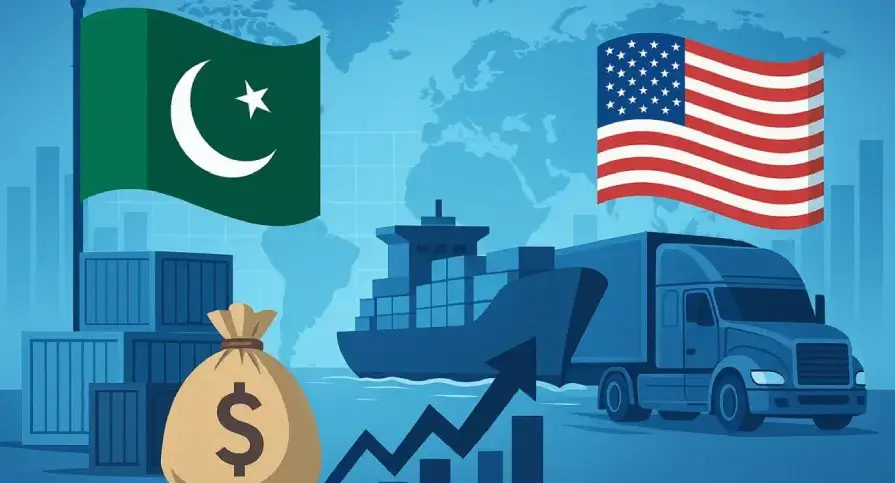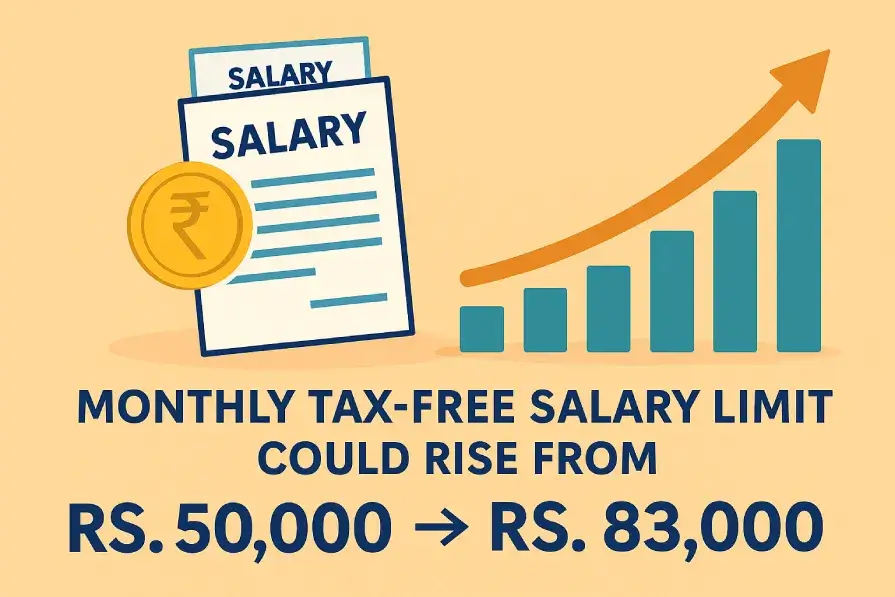Pakistan’s Exports to U.S. Jump 10.4%: A Boost for the Economy

The export volume between Pakistan and the United States grew by 10.4% during the first eight months of this financial year. Official trade records show North American exports from Pakistan achieved a 9.7% growth to total $4.2 billion. The positive export trends indicate improved trading capacity for Pakistan as it confirms the country’s global market success.
Textile Sector Leads the Export Boom
Exports in Pakistan substantially increased because of the foundation established by its textile and garment industry sector. The textile and garment industry origins accounted for 94% of Pakistani exports sent to the United States. Organizational tradition combined with superior production standards and advanced manufacturing facilities makes Pakistani industrial outputs popular among American consumers.
Major U.S. retail companies distribute Pakistani-made textile items through their outlets including bed linens and towels and denim pants and knitted pieces. The foreign exchange reserves of Pakistan benefit from these exports together with the creation of multiple thousand employment opportunities throughout the nation.
Role of Special Investment Facilitation Council (SIFC)
Special Investment Facilitation Council (SIFC) together with its streamlined trade systems gets recognition from experts for contemporary business development achievements. The body shortens procedures and strengthens export processing through administrative reforms to improve business service quality.
Exporters reduce expenses through their programs as they enhance their trade logistic management. The successful progress in business advancement depends on modern customs clearance systems and reduced paperwork procedures.
American Buyers Show Increased Interest
The supply industry benefits from both U.S. market interest from consumers and government restructuring programs. American retail and wholesale companies attempt to establish backup supplier relationships in new locations across international regions although their supply networks have experienced alterations in the global political landscape.
The development of dependable trade relations between Pakistan and other countries results from its successful delivery of quality goods at competitive prices. The growing international market access has led businesses in Pakistan to implement international market practices at high speed.
Trade Policy Reforms Support Growth
Throughout the previous year the Pakistani government executed numerous economic policies focused on enhancing trade. These include:
• Simplified tax rebate systems
• Financial incentives for exporters
The implementation of insurance schemes through trade initiatives minimizes commercial risks.
• Enhanced market access through diplomatic channels
Such initiatives have started producing results that especially increase the export confidence of small and mid-sized business operations.
Export Growth Beyond Textiles
Textiles represent the majority of export numbers yet other sectors demonstrate advancing performance rates. Items such as:
• Leather goods
• Surgical instruments
• Sportswear
• IT services
These sectors have achieved consistent though low-key expansion in their markets. The expansion of export products prevents Pakistan from dependent on single business sectors so the country can maintain stability amid market fluctuations.
Impact on Economy and Job Creation
The recent export increase brings essential implications for Pakistan’s current economic situation. It helps:
• Reduce the trade deficit
The exchange rate will strengthen because of increased dollar revenue into Pakistan monetary system.
• Support industrial expansion
The initiative produces job opportunities throughout primary urban centers as well as rural territories.
The international increase in demand for Pakistani merchandise causes home factories to produce more so all stakeholders from the manufacturers to logistics providers benefit.
Long-Term Outlook and Opportunities
Several experts predict Pakistan will exceed $6 billion in exports to the U.S. during the current fiscal year based on current market trends. To maintain the current growth momentum Pakistan needs to put resources into:
• Product innovation
• Worker training
• Trade infrastructure
• Global marketing campaigns
Exporters need to closely monitor both U.S. regulatory requirements and trade policies for steady operation.
Challenges That Remain
Although exporters have reached positive results there are still several challenges they encounter.
• High energy costs impacting production
• Currency fluctuation risks
Small exporting businesses in Pakistan encounter severe limitations regarding their ability to obtain financing solutions.
• Shipping and port inefficiencies
Sustainable energy management and financial stability and enhanced logistics operations will enable Pakistan to sustain its competitive position.
Final Thoughts
The 10.4% rise in Pakistan’s exports toward the U.S. illustrates more than statistical growth because it represents the combined efforts of Pakistani industry while demonstrating their business strategy and operational endurance. Pakistan views the U.S. as its most significant trading relationship because the current export surge indicates promising prospects for trade balance.









